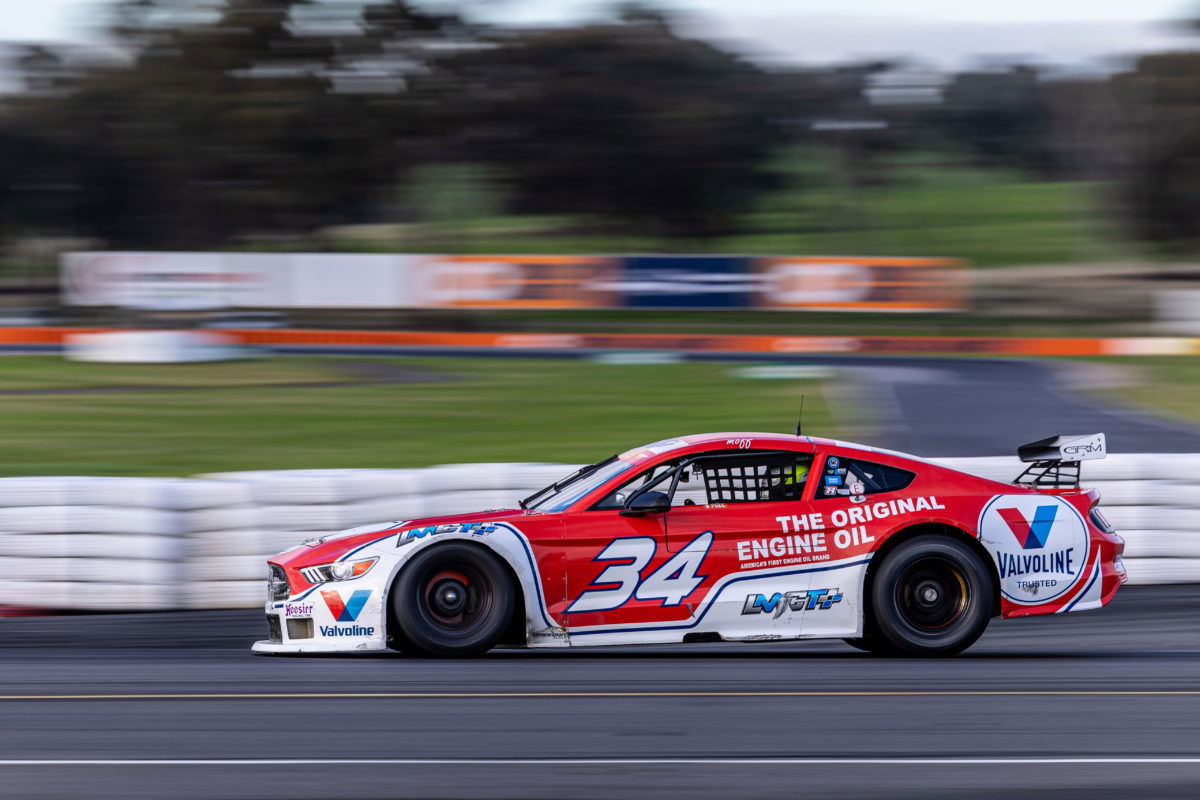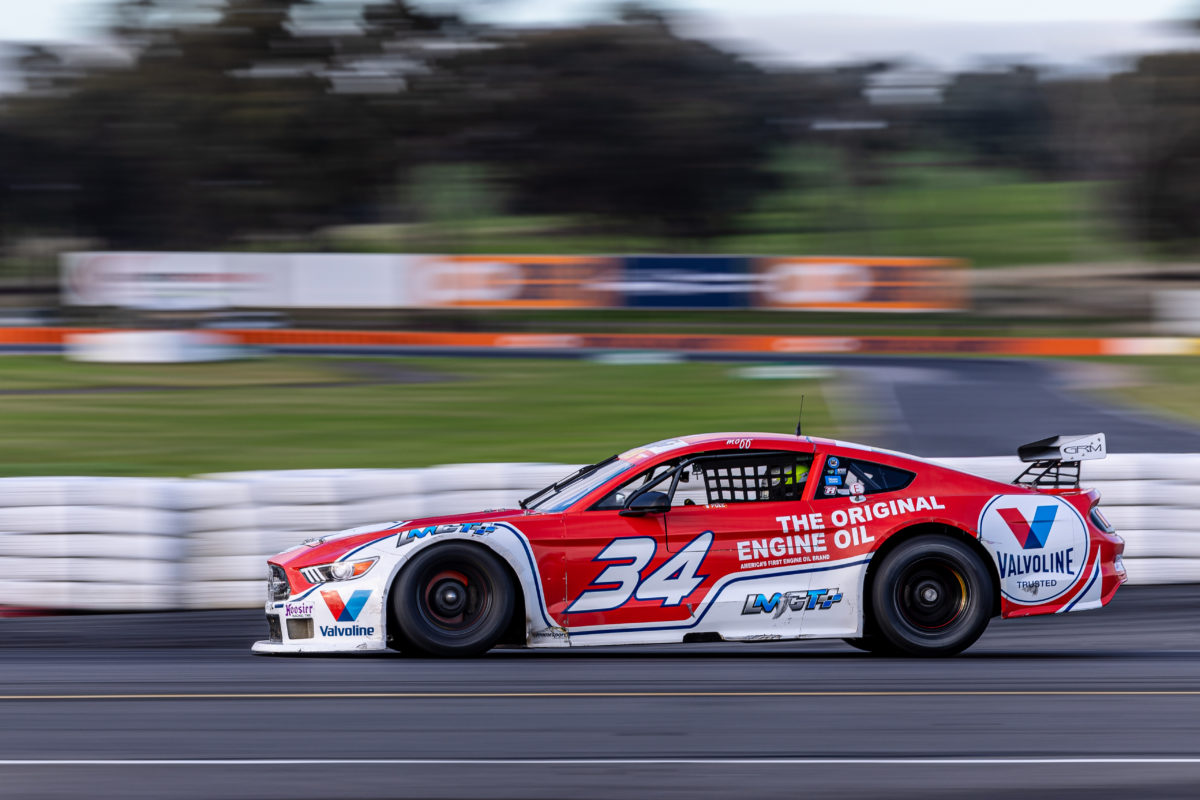

Motorsport Australia has convened an investigatory tribunal into technical changes in the Trans Am Series which have been the subject of recent bulletins.
However, that new part would not address the other challenge of heeling and toeing in a Trans Am car, namely the mismatch in brake and throttle pedal heights.
Since then, another bulletin, entitled, ‘Technical Bulletin #17 (b) – Update’ has also been issued, advising that throttle pedal height may be adjusted by modifying throttle stops, and that pedal pads “may be modified to suit the driver’s preference”.
Now, a Motorsport Australia spokesperson has confirmed to Speedcafe:
“Motorsport Australia can confirm it will convene an independent investigatory tribunal to consider the accelerator pedal set-up in the Trans Am category.
“The make-up of the tribunal and its terms of reference will be released in the coming week.”
Speedcafe is aware that Garry Rogers Motorsport made modifications to its cars before the aforementioned bulletin(s) were issued.
It has raised questions among rival competitors as to whether or not GRM cars raced with the modifications or merely tested with them.
While there is an acknowledgement that improvements to performance, reliability, and the spectacle should be pursued, there are concerns about whether there has been a truly level playing field in the Trans Am Series this year.
A shortcoming of the TA2-spec cars which race in the Trans Am Series (and TA2 Muscle Car Series) is that they are designed for American drivers, who rarely use the clutch.
On that evidence, the heel-and-toe appears to be a performance benefit, or at least a potential performance benefit, rather than merely driver comfort/preference.
In a TA2 car, however, the flex in the firewall and mismatch in pedal heights makes the art of the heel-and-toe even more difficult to pull off.
Now, Speedcafe can reveal exactly the work which GRM undertook, from an email sent out of the team in late-June which has now been circulated among several Trans Am competitors.
That email states, in part:
A basic summary:
- Aim of the project is to allow the driver to heel & toe consistently throughout long runs even where the brake pedal goes long.
- We had to overcome was the fact that the throttle and brake pedal didn’t line up at full brake pressure.
- The other issue was that the firewall on the side of the throttle pedal is very flimsy which means the throttle pedal was hard to blip accurately as it pushed sideways instead of purely down in its stroke.
Solutions:
- Lining up the throttle and brake pedals
-
- The throttle pedal was moved further down towards the firewall at 0% throttle to allow for the pedals to line up when a solid brake pressure was applied.
- To make this work, the throttle stop in the engine bay (which governs how far back towards 0% the throttle returns to) was lengthened (shown in a photo).
- To achieve 100% throttle, the standard throttle stop, mounted behind the pedal was removed and replaced with a bolt & double nutted (as the factory stop is too long to allow for full throttle, not shown in a photo but it’s basic enough).
- Obviously, we had to adjust the throttle cable at both ends, its close to the end of adjustment but it works.
- Preventing the firewall flex when ‘blipping’
-
- We tuned this up in a couple of ways, by purchasing a 2nd “throttle arm” from PBR. Not sure it made a huge difference, potentially clamped onto the throttle shaft a bit better?
- Had a brace fabbed up which is mounted up along the flimsy firewall through 2 of the 3 existing throttle shaft mounting bolts and wraps around the firewall to mount onto the bolt that passes through the firewall to act as the pedal stop.
- Also modded up the throttle pedal face to allow for easier blipping.
The summary raises the question of whether or not the cars, if they did indeed race with such adjustments, would be compliant with Article T2.1 of the Trans Am Series Technical Regulations.
That article states, in its entirety:
T2.1 Modification
2.1.1 Each Automobile must remain unmodified, in compliance with all aspects of these Technical Regulations and identical in all respects to the production make/model as supplied by the original vehicle manufacturer.
2.1.2 Any aspect relating to the construction, modification and/or preparation of the Automobile including the location, fitment/mounting of any ancillary component that is not specifically authorised in the present regulations is prohibited.
The question has also been raised with Speedcafe as to whether or not ‘Technical Bulletin #17’ and ‘Technical Bulletin #17 (b)’, which would appear to have the intent of making the GRM developments legal for competition, even have regulatory value.
Both are published under the letterhead of PBR Distributions, which imports TA2 race cars into Australia, and both carry the name of the PBR Technical Manager at the bottom.
Speedcafe can also confirm that the first of those bulletins was emailed to teams by Australian Racing Group Chief Operating Officer Liam Curkpatrick to teams.
Why this is relevant is because there is no evidence which Speedcafe is aware of that they were issued by Motorsport Australia stewards.
As such, it is worth considering Article S1.2 of the Trans Am Series Sporting Regulations, which states, in part:
S1.2 Authority / Jurisdiction
1.2.1 Each Event incorporating a Round of the 2023 Trans Am Series (Series) will be held under the FIA International Sporting Code including Appendices; the National Competition Rules (NCR) and Circuit Race Standing Regulations (CRSR) of Motorsport Australia; the Sporting and Technical Regulations issued for this Series by Motorsport Australia; Supplementary Regulations issued by the Organiser for each Event; any Bulletin issued by the Stewards and any Driver Briefing Notes and instructions issued by the Race Director or the Clerk of the Course at an Event.
A further question is thus how the PBR bulletin(s) squares with the above-quoted Article T2.1, as the changes to throttle stops would seem contradictory with a rule prohibiting modifications to cars.
Then, even if one assumes for argument’s sake that the bulletin(s) have regulatory value, a further question of fairness to competitors other than GRM has also been raised.
GRM has been able to test the changes, as evidenced by the above-quoted email excerpt.
However, other teams have not necessarily done so.
If indeed the ability to heel-and-toe is a performance advantage, then teams, the vast majority of which are unlikely to be as well-resourced as GRM, face a scramble to make these changes before Round 4 of the season takes place at Queensland Raceway on August 11-13 in order to be competitive.
According to one team boss, the changes to pedal heights are hardly the work of a moment, and would require track testing in order to optimise the set-up.
There is no testing limit in the Trans Am Series in terms of a quantity of days, although testing is prohibited at a circuit within seven days prior to a round commencing at that particular circuit,
In theory, then, it would be possible to test at the other permitted circuits – nearby Morgan Park, Sydney Motorsport Park, Winton, Symmons Plains, or The Bend (noting Wakefield Park is also allowed but currently closed) – anytime before cars have to be presented at Queensland Raceway next week but logistically difficult.
To be clear, Speedcafe makes no accusation that GRM has raced with non-compliant cars.
However, competitors have raised the question of whether they have, and an investigatory tribunal into revisions will soon take place.



















Discussion about this post